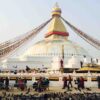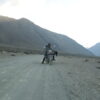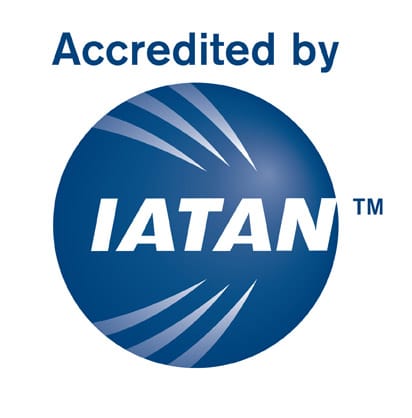Livingstone in Zambia is a tourism hub for visitors to the spectacular Victoria Falls. This historic town has a variety of Zambia accommodation options and some of the best adventure activities in the world.
Livingstone
Livingstone is now a high adventure destination but was once a bustling European settlement named after the intrepid explorer Dr. David Livingstone who traversed southern Africa searching for the source of the Nile.
Home of the country’s first newspaper and the capital of Northern Rhodesia as Zambia was known at the time, this town came into being in 1905, by this time the inspiring Victoria Falls bridge had been built, opening up a railway link between the Copperbelt and coal deposits at Wankie now Hwange in Zimbabwe.
Being the capital city at that time, Livingstone enjoyed very good facilities and became the place to be. Its Edwardian heritage can still be seen in the colonial buildings lining the main street. However, this changed in 1935 when the capital was moved to Lusaka.
Over the years, neglect has crept in, but there is a certain charm about it even now. Livingstone is currently a hotspot for travelers visiting this part of the Zambezi River and Victoria Falls, a World Heritage Site.

Climate
There are three very distinct seasons in Zambia
December to April is very warm and wet with heavy downpours usually late in the day.
May to August is dry and cool, getting cooler toward the end of this period.
September to November is dry and hot, getting hotter toward the end of this period.
Money & Spending
Zambia’s unit of currency is the Zambian Kwacha although US dollars are widely accepted at lodges and hotels throughout the country. If you plan on paying by credit card, be advised that high commissions are sometimes charged around Victoria Falls, and the more remote lodges may have difficulty in processing credit card payments – check with your Africa Safari Expert before you leave.
Generally speaking, safaris are fully inclusive which means that all of your game drives, guided walks, meals, and drinks are included apart from premium brand alcohol and imported liquors.
Tipping
Tipping in Zambia is entirely at your discretion but as a guideline, we recommend $10 USD per person per day for your ranger and tracker and $25 USD to be divided amongst the rest of the lodge staff.
When it comes to restaurants, some establishments will add a service charge to your bill; if not, 10% is standard.
For in-depth tipping guidelines, enquire with one of our Africa Safari Experts – they’d be happy to share their knowledge with you.
Sightseeing
Museums: The Livingstone Museum is Zambia’s oldest and biggest museum, operational since the 1930s. Visitors can move through from Archaeology to Ethnology and the Art Gallery, then through Natural History to the History Gallery. There is a large collection of David Livingstone memorabilia and a library.
The Railway Museum will entertain steam engine enthusiasts with historical locomotives and coaches from the pioneer days, also a photographic collection from that era.
Things to do In Livingstone, Zambia
Golfing: Livingstone has a magnificent parkland 18-hole par 72 golf course set in tranquil manicured gardens with many trees. The Livingstone Royal Golf and Country Club has a wonderful historical Edwardian Club House with a long veranda overlooking the fairways.
There are 2 eateries, one for casual meals and the other for a la Carte meals. Other facilities include a pro shop, gym, lawn tennis, swimming pool, playground, and Spa.
Fishing: Enthusiasts can spend time testing their skills on the beautiful Zambezi River where Tiger Fish, Bream, and other varieties can be found.
Flights of fancy: Visitors can try Micro lighting over Victoria Falls, looking down at the massive 2km (1.24 miles) slice into the earth and following the gorges for 8 km (5 miles), or take a helicopter flip, fixed-wing flights are also offered.
Walks and Guided tours: The Rainforest walk next to the Falls is a must – take a coat if getting wet is not an option! There are lots of walks and guided excursions available in Livingstone and the surrounding area depending on visitors’ time and interests.
Markets, Curios, Arts, and Crafts: There are 2 colorful markets in Livingstone and three arts and craft outlets, two in the town itself (one with a coffee shop and a vegetarian restaurant), and one at the airport. Visitors can browse the many examples of ethnic art and also furniture.
Restaurants: Livingstone has a variety of eateries, quality independent restaurants, and international hotels, and pubs. Visitors can find an Indian Restaurant and takeaways, Chinese food, pubs with grub, fast food, a pizzeria also making shawarmas and burritos, and coffee shops.
What to Pack
For your Zambia safari, pack lightweight, loose-fitting clothing in natural fabrics such as cotton or linen that will keep you cool, as well as a fleece or jacket for the evenings and early mornings. Zambia is known for its excellent walking safaris so be sure to pack a pair of comfortable walking shoes, as well as a hat or cap to protect you from the sun. And if you are visiting during the rainy season, don’t forget to pack a raincoat – downpours in Zambia are generally short but very heavy.
On game drives, stick to light neutral clothing colors such as khaki, olive, and brown but not white as it will quickly get dusty. Avoid black and dark blue as these colors attract tsetse flies.
When traveling in Zambia, bear in mind that the dress code is conservative so women should pack knee-length or longer skirts to wear in the towns.

Adventure Tour Activities in Zambia
Livingstone has now taken on a new identity as the adventure capital of southern Africa. The Zambezi River, Victoria Falls, and the Batoka Gorge are in close proximity to the town and it’s an excellent base from which to explore all the action.
White water rafting: One of the most intense experiences that can be imagined! It’s a wild roller coaster journey rafting from the base of Victoria Falls through the Batoka Gorge.
There are 13 thundering rapids when the river is high, usually from March to July. Once the water level drops then the full 23 rapids can be done. This adventure can be taken in a half-day, full day, or two days (with camping in the gorge) excursion.
Bungee Jumping: For a life-changing rush, take a leap of faith from the highest bridge jump in the world! The bridge, between Zambia and Zimbabwe in no man’s land, is 111 meters high and spans the Batoka Gorge, with the mighty Zambezi River below.
River-boarding, Abseiling, and Gorge Swinging: River-boarding is like surfing, but on the Zambezi River through rapids, safety gear is worn but it is a lot of fun and rewarding too. Abseiling down the gorge, high wiring, gorge swinging, and rap jumping with a safety harness and as much courage as can be mustered, visitors can spend the whole day doing them all for maximum fun!
Tandem Kayaking and Canoeing: Another great adventure negotiating rapids with a seasoned white water rafting guide! For a more sedate experience, guided canoeing is just the ticket. Visitors can glide along the Zambezi and take in the beautiful scenery, skirt islands and watch the wildlife. There are also overnight trips with camping on the islands.
Jet Boating: This is a thrill ride in high-speed jet-propelled boats over the rapids on the Zambezi River.
Horse Riding Trails: The horse trails are a delight through wonderful scenery including river crossings and camping out if a 2-hour ride is not enough

How to Get to Livingstone Zambia?
By Air: There are scheduled flights from Lusaka, Zambia, and internationally from Johannesburg, South Africa as well as from a variety of African countries. Livingstone Airport is well served by a number of Air Charter companies combining various destinations locally and internationally.
By Road: From Lusaka, Livingstone is 470km (292 miles) southbound on Kafue Road. Just after the Kafue River Bridge, take the turn right towards Mazabuka, this road continues to Livingstone.
From Victoria Falls town: cross the border on the Victoria Falls Bridge and continue up the road for 11km (7 miles) to Livingstone.
From Botswana: take the ferry at Kazungula to cross the border. Continue east for about 60km (37 miles) to Livingstone.
Flights & Getting Around
Kenneth Kaunda International Airport: located 14km from Lusaka, Zambia’s major gateway is served by several direct flights but many travelers arrive via Johannesburg. Transfer to charter flights for South Luangwa, Lower Zambezi, and Kafue National Parks.
Harry Mwanga Nkumbula International Airport (Livingstone): half an hour’s drive from the falls, visitors to the Zambian side of Victoria Falls arrive via Lusaka or Johannesburg.
The distances between Zambia’s parks are considerable and infrastructure is limited, especially in the rainy season, so the easiest way to get around the country is to fly. Transfers and game drives are conducted in open-sided 4X4s.
Note that if you’re taking internal flights there is often a luggage restriction of 12kg per person packed in soft bags. Zambia is stricter about this than most countries and even bags with only one hard side might not be allowed.
Visa & Passport Requirements
All visitors to Zambia need to be in possession of a passport valid for at least six months from their date of departure. Citizens of South Africa and Zimbabwe can obtain Zambian visas upon arrival for free; for all other nationalities, tourist visas are available at all major borders, airports, and seaports.
Generally, Zambia visas are priced in four different brackets, depending on the length of stay: 7-day transit visa; single-entry visa; double-entry visa, or multiple-entry visa.






